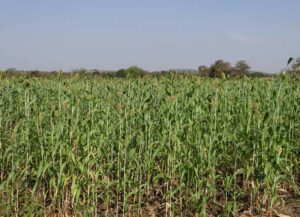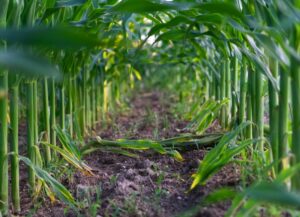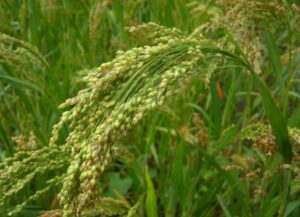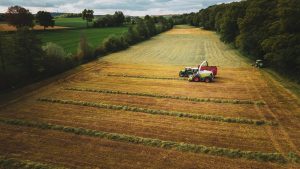Álvaro García
Dairy farm profitability has become highly volatile, with increasingly drastic extremes between good and bad years. This is not only the result of variability in milk prices but oftentimes changes in feed costs, as influenced by local and world markets. In confined dairy production systems, feed constitutes the largest individual item of the operating cost of production, usually exceeding 60% of the total.
As a result, finding ways to reduce these expenses has the largest impact on the profitability of the farm. On a dry matter basis, the dairy ration consists of concentrates (50-60%) and forages (40-50%). Corn in all its forms (e.g. grain, silage, coproducts) is one of most frequently used feedstuffs in intensive dairy production systems around the world.
Of the forage fraction, corn silage supplies highly digestible forage which is critical to optimize productivity and profitability. A usually underutilized component in dairy rations are corn plants (stover) left after harvesting corn for grain. One of the reasons is that they are high in fiber and lignin which makes them less digestible and as a result, unable to sustain higher milk production.
Corn stover, however, is utilized in other animal categories in the farm such as growing heifers, and dry cows, both of which require less energy-dense rations. There are however differences in plant digestibility between corn hybrids as affected by their lignification and/or even the diameter of their stalks which might help maximize their utilization in dairy farms.
In addition, including fibrous feedstuffs in dairy cow diets results in more hydrogen being produced from their fermentation in the rumen and as a result more methane emitted through eructation. There is a need then to explore how much stover can be included in dairy diets without hampering milk production and/or increasing methane emissions.
A recent experiment (He et al., 2020) looked the optimum ratio of whole plant corn silage (WPCS) to corn stover (stems+leaves) silage (CSS), and its impact on dairy farm profitability. Additional parameters of interest of this experiment were enteric methane production at different milk production levels.
The researchers used 4 different corn plant hybrids Lg30248, Perley, Rivaldinio and Leovoxx, all grown and harvested in the Netherlands. The first two were stored as WPCS and latter two as CSS. All plants were cut at 10 cm above ground level, and the ears of 5 plants per cultivar separated from the leaves and stems (stover).
Another 5 whole plants were chopped into 1-2 cm pieces and ensiled in 0.5 L glass laboratory scale silos. Rivaldinio and Leovoxx varieties were ensiled with 1% molasses (fresh weight) and inoculated with 10 mL of a solution of Lactobacillus plantarum per kg of fresh forage (0.758 g L. plantarum mixed with 2.5 L distilled water). The silages fermented for 8 weeks and were then were stored at –20°C until analyzed.
Optimum ratio of whole plant corn silage to corn stover silage
The WPCS:CSS that maximized profit for 0, 10, 20, and 30 kg milk/cow/day were 16:84, 22:78, 44:56, and 88:12, respectively, and the land area needed to grow corn plants was 4.5, 31.4, 33.4, and 30.3 ha, respectively. As could be expected the corn grain available (ton DM/ha/year) for other purposes saved from this land area decreased as milk production increased.
When compared with cows producing 30 kg of milk per day, more low producing cows (10 kg/d milk) and more land to grow corn and soybeans was needed to produce the same total amount of milk.
Cows have fixed costs of energy maintenance regardless of how much they produce, and they will eat to fulfill those requirements with methane being produced as a result. Two cows producing 15 kg of milk each will be more taxing to the environment than one cow producing 30 kgs. This shows the importance of maximizing cow’s productivity in order to optimize land use both for crops and milk production per hectare.
Increasing the metabolizable energy of the CSS reduced the land needed, increased the profit, and allowed for more corn to be used for other purposes. Allowing cows to manifest their genetic potential through additional feeding also reduces gas emissions as the energy in them is deposited in dairy products instead of being eliminated to the atmosphere.
Since methane production is correlated with feed intake, it was greater in cows that ate more and produced more. However, when evaluated per kg of milk produced it was lower, showing increased efficiency of feed utilization. As could also be expected the optimum ratio of WPCS:CSS to maximize dairy farm profits increases with decreased milk production levels.
This is logical since cow requirements are lower which allowed for greater inclusion of CSS in their diet. High producing cows increase the corn available for other purposes which again underscore the feed efficiency of these cows compared to their low-producing counterparts.
Reference
Yuan He, John W. Cone, Wouter H. Hendriks, and Jan Dijkstra. 2021. Corn stover usage and farm profit for sustainable dairy farming in China. Anim Biosci. Vol. 34, No. 1:36-47.
© 2021 Dairy Knowledge Center. All Rights Reserved.









